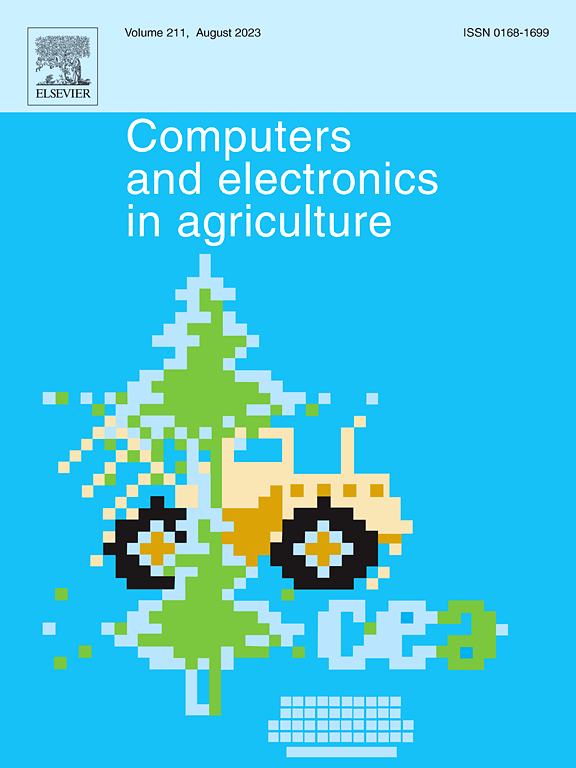Decoupled motion planning method for 7-DOF manipulator and lifting joint in automated tomato harvesting
IF 8.9
1区 农林科学
Q1 AGRICULTURE, MULTIDISCIPLINARY
引用次数: 0
Abstract
Robotic harvesting tasks must contend with complex operation environments, where varying grasping poses, fruit heights, and obstacle distributions impose higher demands on the robot’s effective working space and dexterity. A fixed robotic arm base placement for the robotic arm can result in targets being outside the arm’s reachable space or unreachable with the given approach pose, which reduces the robot’s harvesting success rate. In this work, we propose a step-by-step path planning method that decouples the robotic arm and the lift joint. This method is based on the reachability map of the robotic arm and takes into account the arm’s manipulation costs (including similarity cost and gravity cost) as well as the lift joint’s movement cost. After performing a fast non-dominated sorting of the costs for the discrete point candidates, it generates sorted lift height candidates. Finally, improved RRT* for the robotic arm is executed at the optimal position of the lift joint. Field test results conducted on 36 samples validate the effectiveness of the proposed method. In observation tasks, the system achieved a success rate of 35 out of 36 (97.2 %), with a lift joint planning time of 3.09 ms. For grasping tasks, the decoupled approach achieved an overall success rate of 83.3 % (30/36) with a lift joint planning time of 5.95 ms, significantly outperforming the fixed-set method (36.1 %, 13/36) and Reuleaux method (77.8 %, 28/36). This indicates that the method can significantly improve the success rate of tomato harvesting by robots in vertical farms, with an acceptable time cost. The findings establish a robust foundation for improving robotic harvesting systems by addressing the limitations of conventional approaches. The proposed method not only achieves high success rates and motion efficiency but also provides a scalable and practical solution for modern agricultural robotics.
番茄自动采收中七自由度机械手与升降关节的解耦运动规划方法
机器人收获任务必须应对复杂的操作环境,不同的抓取姿势、果实高度和障碍物分布对机器人的有效工作空间和灵活性提出了更高的要求。固定的机械臂基座位置会导致目标在机械臂的可达空间之外或在给定的接近姿势下无法到达,从而降低了机器人的收获成功率。在这项工作中,我们提出了一种机器人手臂和升降关节解耦的分步路径规划方法。该方法以机械臂的可达性图为基础,考虑了机械臂的操作成本(包括相似成本和重力成本)以及升降关节的运动成本。在对离散候选点的成本进行快速非支配排序后,它生成了排序的升力高度候选点。最后,在提升关节的最优位置对机械臂执行改进的RRT*。36个样品的现场试验结果验证了该方法的有效性。在观测任务中,系统的成功率为35 / 36(97.2%),升降机联合规划时间为3.09 ms。对于抓取任务,解耦方法的总体成功率为83.3%(30/36),提升联合规划时间为5.95 ms,显著优于固定集方法(36.1%,13/36)和勒洛方法(77.8%,28/36)。这表明该方法可以显著提高垂直农场中机器人收获番茄的成功率,且时间成本可接受。研究结果通过解决传统方法的局限性,为改进机器人采收系统奠定了坚实的基础。该方法不仅具有较高的成功率和运动效率,而且为现代农业机器人提供了一种可扩展和实用的解决方案。
本文章由计算机程序翻译,如有差异,请以英文原文为准。
求助全文
约1分钟内获得全文
求助全文
来源期刊

Computers and Electronics in Agriculture
工程技术-计算机:跨学科应用
CiteScore
15.30
自引率
14.50%
发文量
800
审稿时长
62 days
期刊介绍:
Computers and Electronics in Agriculture provides international coverage of advancements in computer hardware, software, electronic instrumentation, and control systems applied to agricultural challenges. Encompassing agronomy, horticulture, forestry, aquaculture, and animal farming, the journal publishes original papers, reviews, and applications notes. It explores the use of computers and electronics in plant or animal agricultural production, covering topics like agricultural soils, water, pests, controlled environments, and waste. The scope extends to on-farm post-harvest operations and relevant technologies, including artificial intelligence, sensors, machine vision, robotics, networking, and simulation modeling. Its companion journal, Smart Agricultural Technology, continues the focus on smart applications in production agriculture.
 求助内容:
求助内容: 应助结果提醒方式:
应助结果提醒方式:


